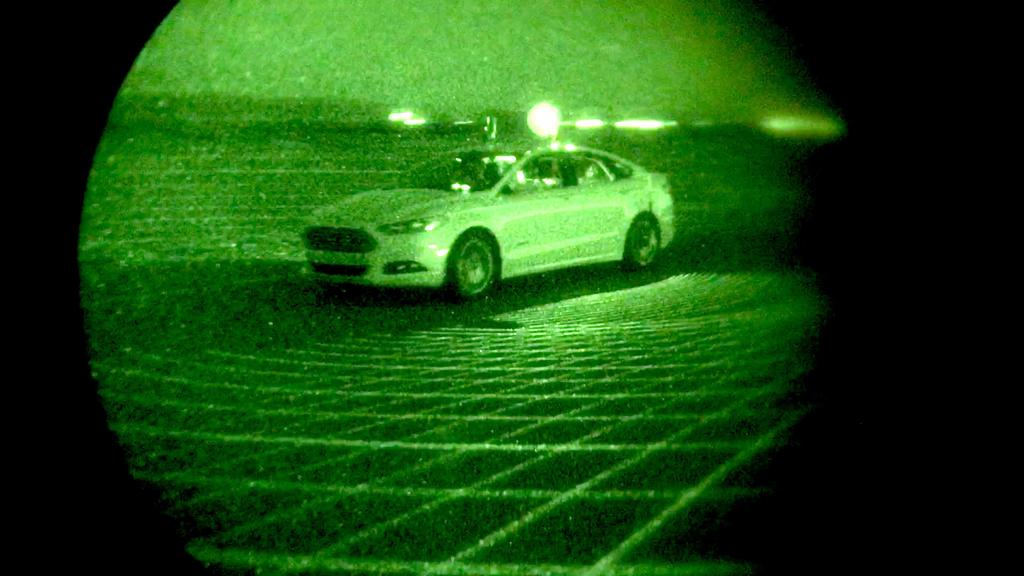
CARS.COM - KITT from the Knight Rider TV show of the '80s was a Pontiac Trans Am, but in the age of autonomous cars the real "night rider" is a Ford Fusion Hybrid. In an announcement today, Ford shed some light on its Fusion autonomous research vehicles' ability to drive in the dark - without the need for headlamps.
Related: Man or Moose? Volvo's Large-Animal Detection Decides, Avoids
The Detroit automaker's light detection and ranging (LIDAR) sensor system works with the car's virtual driver software to drive in the black of night, when the traffic fatality rate is triple that of the daytime, according to the National Highway Traffic Safety Administration. LIDAR essentially renders headlights, and for that matter sunlight, obsolete, where driving is concerned. It also doesn't rely on cameras detecting the painted lines on the road to function just as well at night as during the day, Ford said.
"It's an important development, in that it shows that even without cameras, which rely on light, Ford's LIDAR - working with the car's virtual driver software - is robust enough to steer flawlessly around winding roads," the automaker said in a statement. "While it's ideal to have all three modes of sensors - radars, cameras and LIDAR - the latter can function independently on roads without stoplights."
The system uses high-resolution 3-D maps that contain info about the road, road markings, geography, topography and landmarks such as signs, buildings and trees. It sends out 2.8 million laser pulses a second to pinpoint itself on a real-time map, and uses additional radar data to round out its sensing capability.
Researchers recently tested the system at Ford's Arizona Proving Ground. Engineers watched through night-vision goggles from both inside and outside the car. The goggles displayed infrared laser beams projected around the vehicle as it drove, precisely showing its every move.
"Inside the car, I could feel it moving, but when I looked out the window, I only saw darkness," Ford researcher Wayne Williams said in a statement. "As I rode in the back seat, I was following the car's progression in real time using computer monitoring. Sure enough, it stayed precisely on track along those winding roads."
Ford said it plans to triple its autonomous vehicle test fleet this year to about 30 cars operating on California, Arizona and Michigan roads.
No comments:
Post a Comment